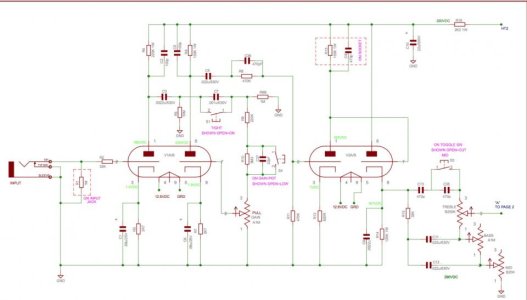I just finished building a head based on a Marshall. I have a question regarding the schematic and what a certain part of the circuit does
What is the purpose of C1/R3 and C6/R7 coming out of the V1 and V2 Cathodes?
Is the resistor added with the capacitor as a low pass filter?
If so why are they in each stage of the V1 A & B, V2 B, but not V2 A? Is this because we have Miller Capacitance?View attachment 80257
What is the purpose of C1/R3 and C6/R7 coming out of the V1 and V2 Cathodes?
Is the resistor added with the capacitor as a low pass filter?
If so why are they in each stage of the V1 A & B, V2 B, but not V2 A? Is this because we have Miller Capacitance?View attachment 80257

